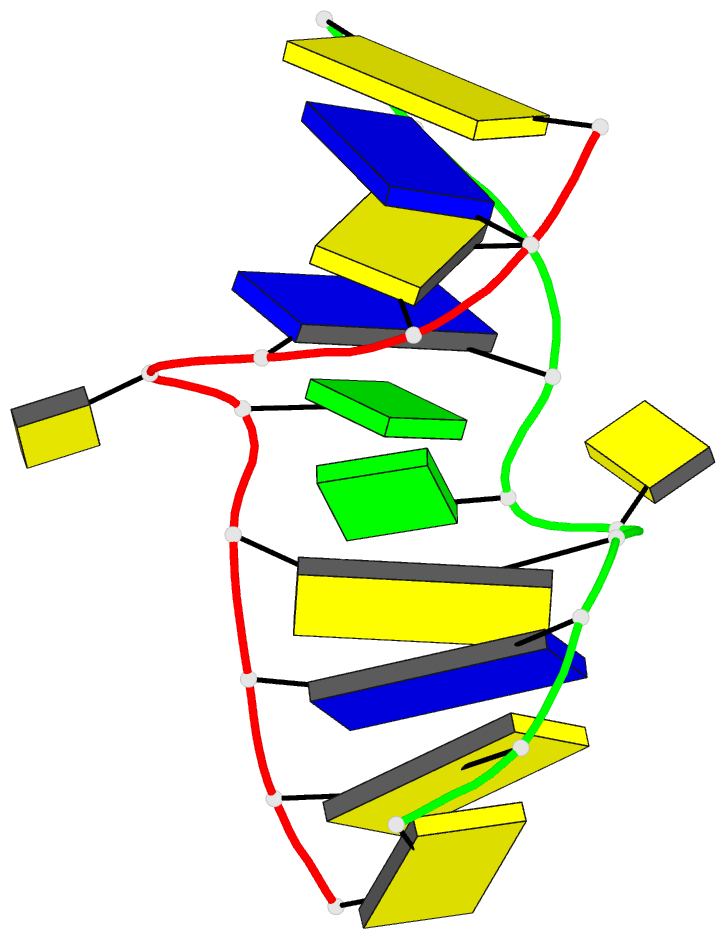Summary information and primary citation
- PDB-id
-
1a2e;
SNAP-derived features in text and
JSON formats
- Class
- DNA
- Method
- X-ray (1.63 Å)
- Summary
- Crystal structure of a double-stranded DNA decamer
containing a cisplatin interstrand cross-link adduct
- Reference
-
Coste F, Malinge JM, Serre L, Shepard W, Roth M, Leng M,
Zelwer C (1999): "Crystal
structure of a double-stranded DNA containing a cisplatin
interstrand cross-link at 1.63 A resolution: hydration at
the platinated site." Nucleic Acids Res.,
27, 1837-1846. doi: 10.1093/nar/27.8.1837.
- Abstract
- cis-diamminedichloroplatinum (II) (cisplatin) is a
powerful anti-tumor drug whose target is cellular DNA. In
the reaction between DNA and cisplatin, covalent
intrastrand and interstrand cross-links (ICL) are formed.
Two solution structures of the ICL have been published
recently. In both models the double-helix is bent and
unwound but with significantly different angle values. We
solved the crystal structure at 100K of a double-stranded
DNA decamer containing a single cisplatin ICL, using the
anomalous scattering (MAD) of platinum as a unique source
of phase information. We found 47 degrees for double-helix
bending and 70 degrees for unwinding in agreement with
previous electrophoretic assays. The crystals are
stabilized by intermolecular contacts involving two
cytosines extruded from the double-helix, one of which
makes a triplet with a terminal G.C pair. The platinum
coordination is nearly square and the platinum residue is
embedded into a cage of nine water molecules linked to the
cross-linked guanines, to the two amine groups, and to the
phosphodiester backbone through other water molecules. This
water molecule organization is discussed in relation with
the chemical stability of the ICL.





